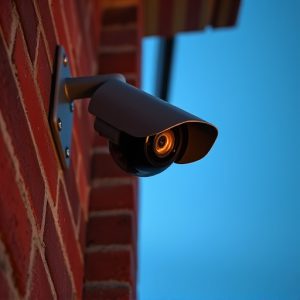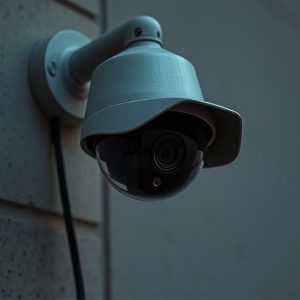Securing Your Home: A Guide to Hidden Security Camera Selection and Installation
When choosing a hidden security camera system for your home, it's crucial to consider factors s…….
When choosing a hidden security camera system for your home, it's crucial to consider factors such as resolution, night vision, field of view, design, storage solutions, motion detection, and real-time alerts. These features ensure the cameras remain inconspicuous while providing clear surveillance footage and effective monitoring. Legal compliance is essential, as you must adhere to privacy laws by informing occupants and visitors about the surveillance and avoiding recording in areas with a reasonable expectation of privacy. Strategic placement is key for comprehensive coverage, targeting entry points, valuable items, and high-traffic zones, and ensuring cameras are out of sight yet functional. Integrating these cameras with your smart home system can enhance their capabilities by allowing remote access, real-time monitoring, and adaptive security based on daily routines, thereby offering robust protection while maintaining the aesthetic appeal of your living space. In essence, hidden security cameras serve as a discreet and efficient means to safeguard your home, balancing privacy with security, and leveraging smart technology for smarter surveillance.
In today’s interconnected world, safeguarding one’s home is paramount. A pivotal aspect of modern home security strategies involves the strategic deployment of hidden security cameras. These discreet devices serve as vigilant sentinels, ensuring the sanctity and safety of your living space. This comprehensive guide will navigate you through the essential types, legitimate uses, and legal boundaries of hidden security cameras. Additionally, we’ll delve into the critical features that distinguish a reliable camera system from its lesser counterparts. From the nuances of installation to the synergy with smart home technology, this article is an indispensable resource for enhancing your home’s defenses without compromising on aesthetics.
Understanding Hidden Security Cameras: Types, Uses, and Legal Considerations
When integrating hidden security cameras into your home’s surveillance system, it’s crucial to understand the various types available and their intended uses. Hidden security cameras, often discreetly designed, can range from tiny, pinhole models that blend into your environment to more sophisticated devices equipped with advanced features like motion detection and night vision capabilities. These cameras are typically used to monitor sensitive areas within a home, such as child playrooms, valuable item storage spaces, or entry points, ensuring peace of mind for homeowners.
Deploying hidden security cameras responsibly also involves legal considerations. It’s imperative to be aware of privacy laws and regulations that govern video recording in your jurisdiction. In many regions, it’s illegal to record areas where individuals have a reasonable expectation of privacy, such as bedrooms or bathrooms. Additionally, inform all residents and visitors when entering your property that they may be under surveillance, as failure to do so could lead to legal complications. The ethical use of hidden cameras in the home is paramount, ensuring that recorded footage respects the privacy of individuals at all times. Understanding these types, uses, and legal considerations is essential for the effective and responsible implementation of hidden security cameras within your living space.
Key Features to Look for When Selecting a Discreet Camera System
When selecting a discreet camera system for your home, prioritizing key features is paramount to ensure both your privacy and peace of mind. High-quality hidden security cameras should offer sharp resolution to capture clear footage without being conspicuous. Opt for models with night vision capabilities to monitor your home around the clock, ensuring no detail goes unnoticed regardless of lighting conditions. Additionally, consider the camera’s field of view; a wider angle can cover more area, reducing the number of cameras needed and maintaining the covert nature of your surveillance system.
For seamless integration into your home environment, hidden security cameras must be designed with aesthetics in mind. They should blend effortlessly with everyday objects or be small enough to remain unobtrusive in plain sight. Storage options are another crucial aspect; ensure the camera supports local storage, cloud storage, or both, giving you flexibility and redundancy for your footage. Furthermore, ensure the system is equipped with motion detection and real-time alerts so you can respond promptly to any suspicious activity. With these considerations in mind, investing in a high-quality hidden security camera system will not only enhance the safety of your home but also maintain its aesthetic integrity.
The Installation Process of Hidden Security Cameras: Best Practices and Tips
When considering the installation process of hidden security cameras in your home, it’s crucial to plan and execute placement strategically for optimal surveillance coverage. Begin by identifying the areas within your residence that require monitoring; this typically includes entry points, valuable items, or areas with high foot traffic. Once you’ve determined the necessary locations, select cameras that blend seamlessly into their surroundings, ensuring they are inconspicuous yet capable of capturing clear footage.
Proper installation involves more than just placing the camera; it encompasses selecting an appropriate power source, securely mounting the device to prevent tampering, and aligning the lens for unobstructed visibility. For wireless models, ensure they are positioned within the range of your Wi-Fi network to facilitate real-time monitoring and remote access. Additionally, consider the camera’s field of view and angle to cover blind spots effectively. It’s also advisable to use a high-quality cable for wired cameras, ensuring it is routed in a way that prevents it from being seen or easily accessed by an intruder. Remember to adhere to local privacy laws when installing hidden security cameras, especially if they face public spaces or neighboring properties. Regularly testing your cameras post-installation will confirm their functionality and ensure that your home remains under vigilant watch.
Maximizing Your Home's Safety with Hidden Security Cameras: Placement Strategies and Integration with Smart Home Systems
Hidden security cameras can be a discreet yet powerful addition to your home’s safety measures. Strategic placement is key to capturing all areas effectively, ensuring that every corner of your home is under surveillance. Consider blind spots in your home where criminal activity might occur and place cameras there. High-traffic areas like entrances, hallways, and staircases are ideal for monitoring. Cameras should also be directed towards valuables or sensitive information to deter theft or protect privacy.
Integrating these hidden security cameras with smart home systems enhances their utility and efficiency. Many modern security cameras can connect to your existing smart home ecosystem, allowing you to view live feeds on your phone, tablet, or smart display. Motion-activated alerts keep you informed in real time and can record incidents as they happen. This seamless integration means that you can keep an eye on your property without compromising the aesthetic integrity of your home decor. Advanced systems can even learn your routine, optimizing camera activity to focus on areas where surveillance is most needed throughout the day. By carefully placing hidden security cameras and linking them with smart home technology, you create a robust security system that safeguards your home and its inhabitants from various threats around the clock.


